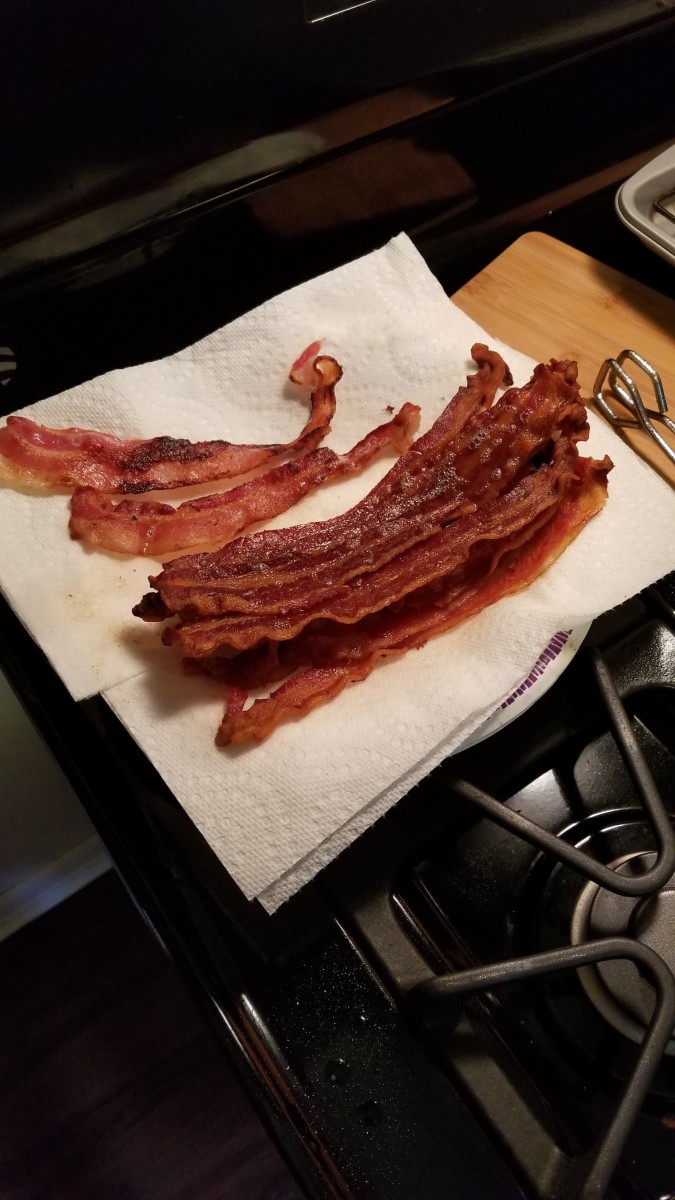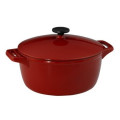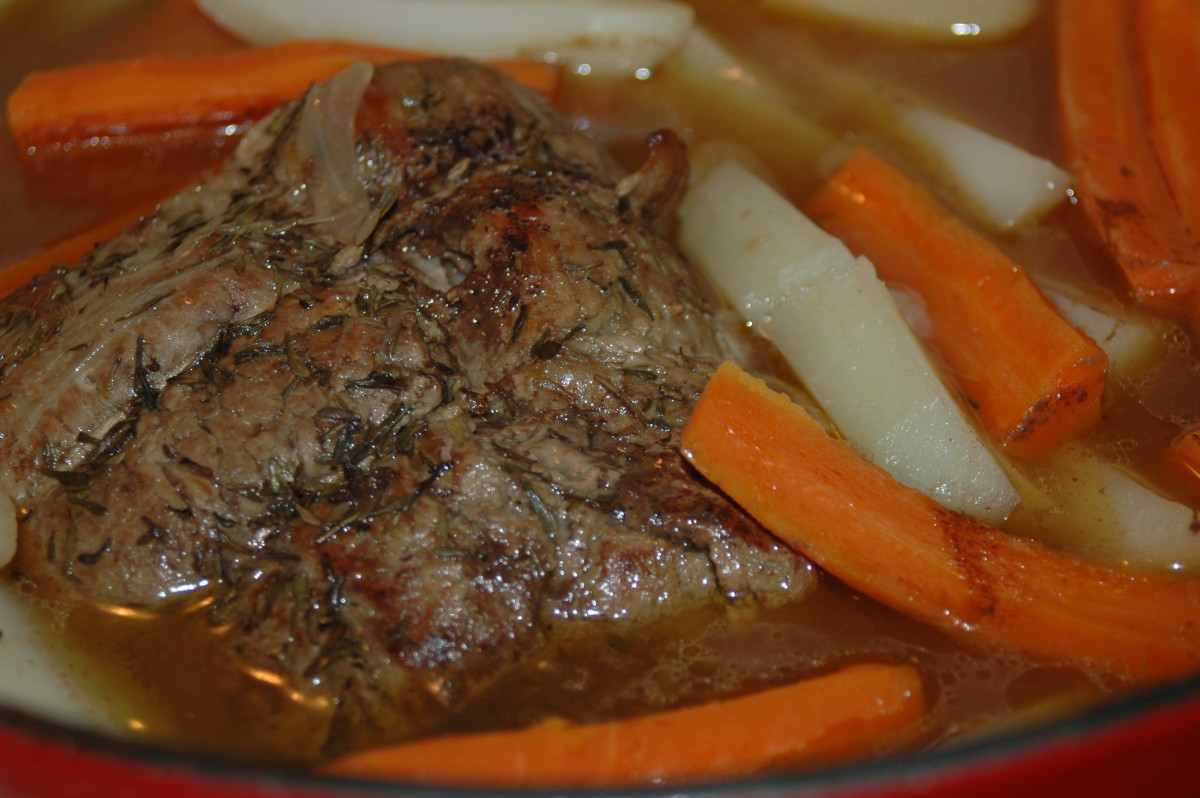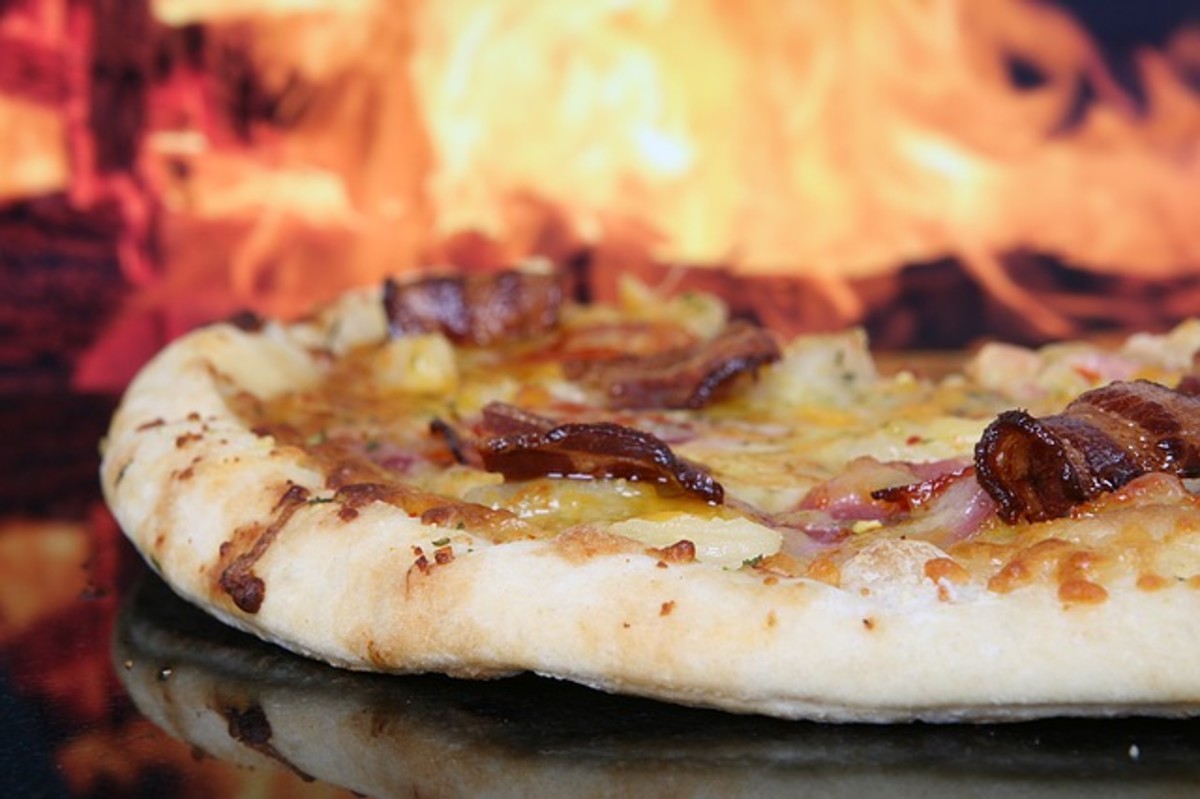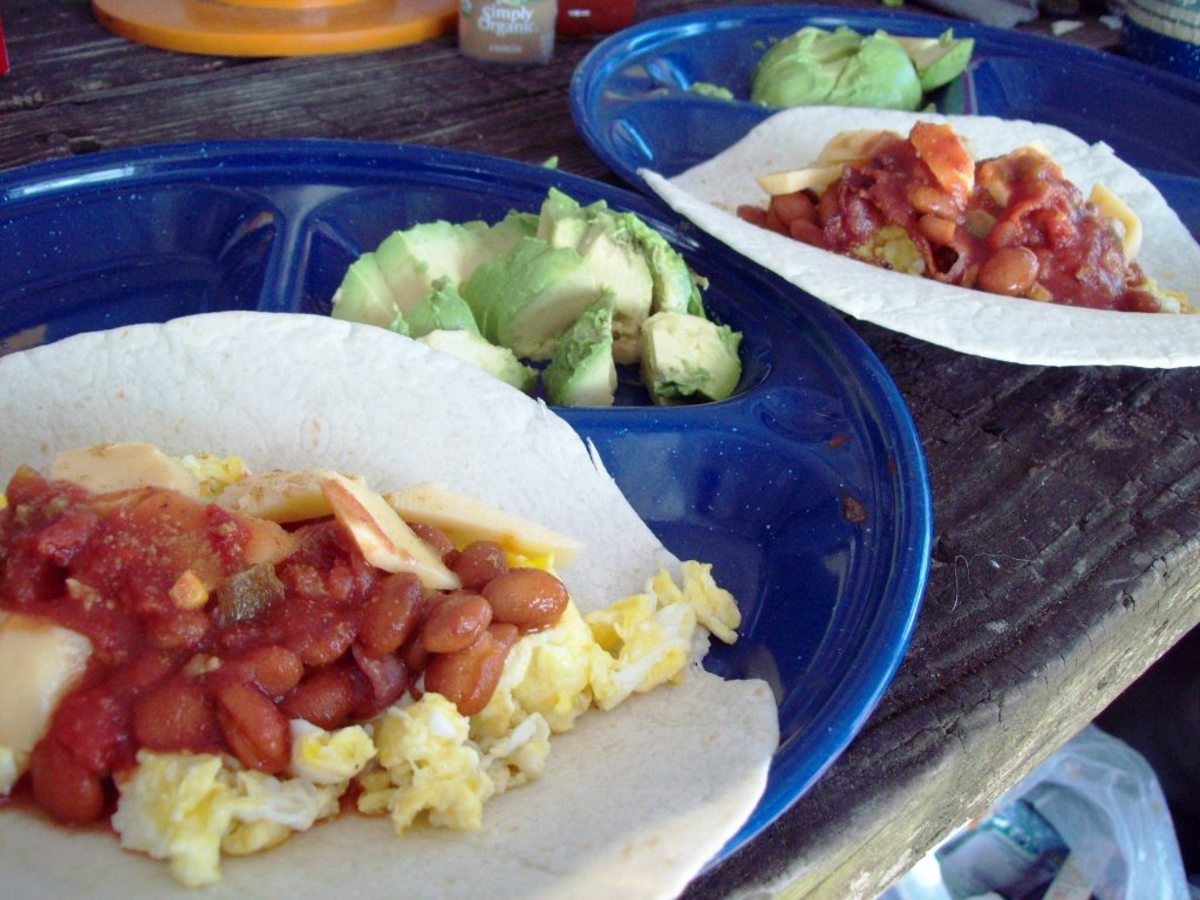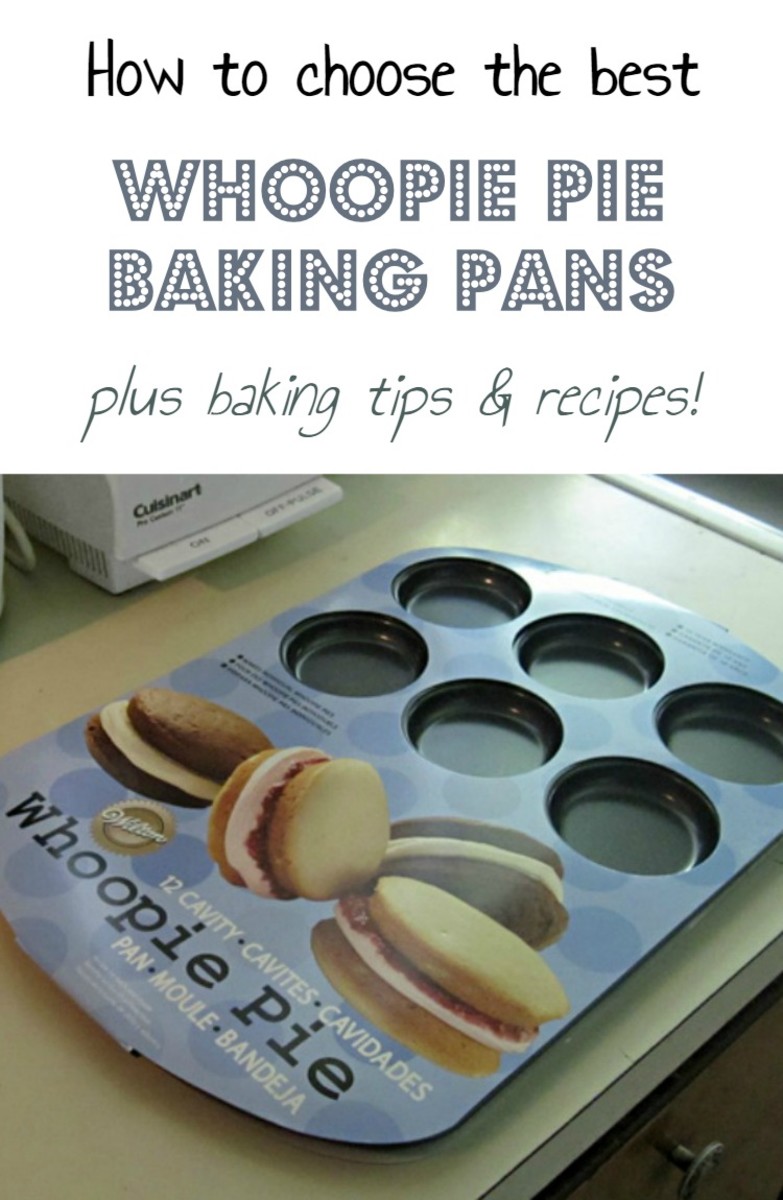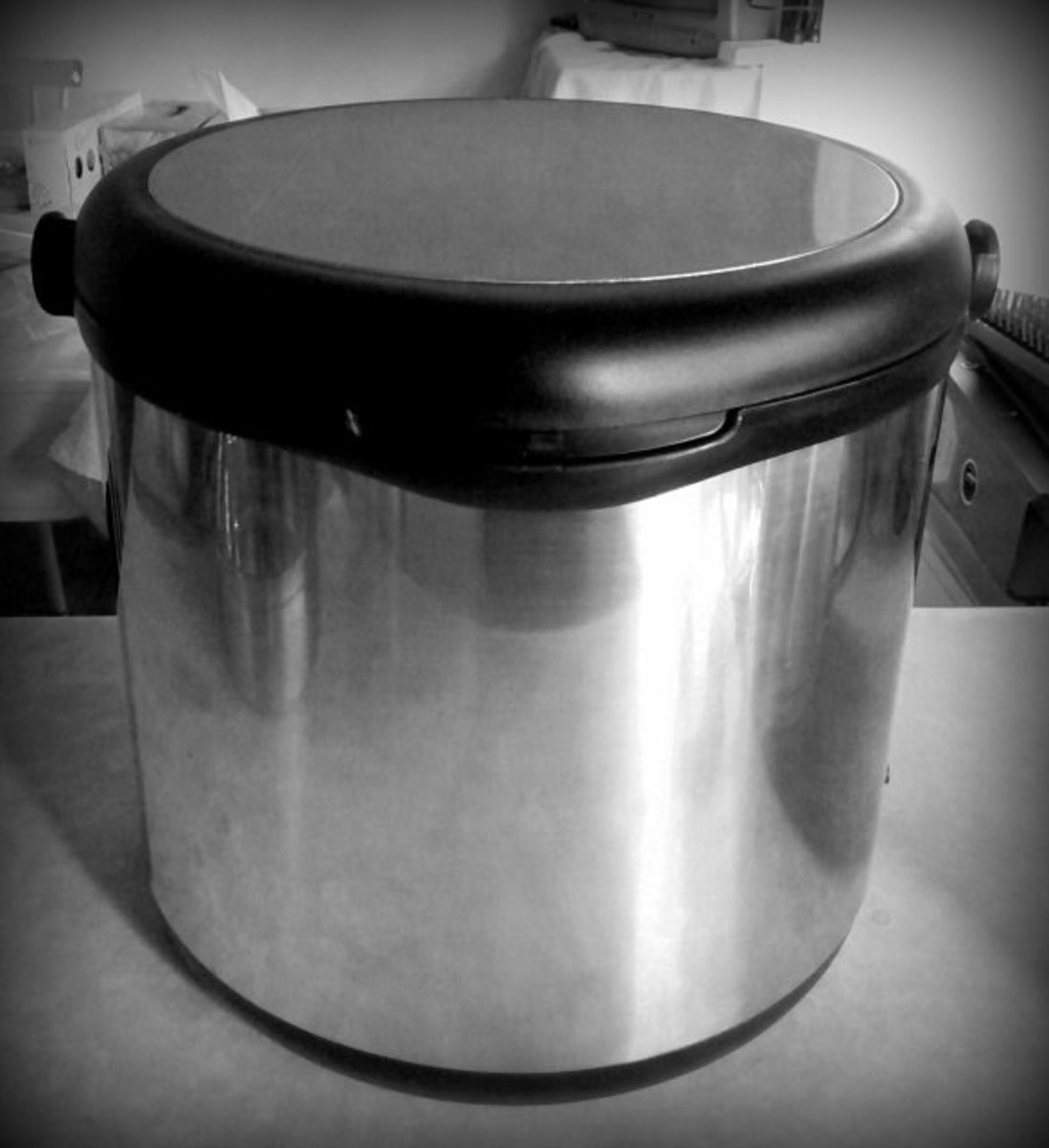Dutch Oven or Casserole
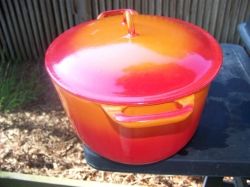
Primary tool for mastering the art
Julia Child -- the immortal Julia * -- says right at the very beginning of her "Mastering the Art of French Cooking," in the chapter entitled "Kitchen Equipment - Batterie de Cuisine", the following:
"With the exception of heavy copper, the best all-purpose material, in our opinion, is heavy, enamelled cast iron. It conducts heat very well, its enamelled surface does not discolor foods, and it is easy to clean."
(That exception for heavy copper doesn't turn out to count for very much, as she notes its virtues, but stresses how hard it is to clean and maintain.)
Julia has mainly in mind (she and her two co-authors) the Dutch oven, which she calls a casserole. (The French call it a French oven, when they are not calling it a cocotte.) Julia recommends oval ones over round ones because that shape can hold "a chicken or a joint of meat."
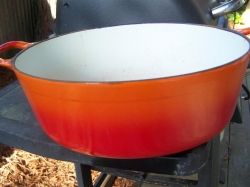
Recipe: Something to fill your Dutch oven
- good-sized piece of fresh brisket
- a leek or two (halved lengthwise and any dirt washed away)
- lots of baby carrots or regular ones cut in sticks
- thyme, a teaspoonful
- 4 cups beef broth (or 2 beef, 2 vegetable)
- 4 cups dry white wine
- coarse ground pepper and kosher or sea salt
Serves about four.
1. Slice off any fat the butcher has left on the brisket, start the flame under your Dutch oven, throw in the fat and swish it around as it melts to cover the bottom of the pan.
2. Brown the brisket (ie, sear both sides)
3. Add everything but the carrots and leek (scallions can be substituted) *
4. Cover and simmer on low flame for 1 1/2 hours. Then add carrots and leeks and cook until they are done to your taste.
Serving this: Fork the brisket out of the pot onto a cutting board and slice into thin pieces. These go into large bowls, along with the broth/wine soup, carrots and pieces of leek. Accompany these bowls with pieces of a baguette (sourdough or plain), buttered. The bread is delcious when dipped into the soup.
French peasants know how to live; this is waiting for them, some of them anyway, when they come out of the fields. It can be waiting for you, too.
* Traditionally they are left out until the end, but if you don't mind them being softer, throw them in as well at the beginning or whenever you want.
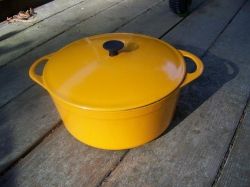
Your can store them in the fridge
If, for example, there is any of the brisket and soup left over at the end of the meal (unlikely, unless you have two Dutch ovens and doubled the recipe), you can just wait for everything to cool and put everything in your refrigerator. Take it out when needed again, put the pot on to boil, and enjoy. Leftovers still? Back in the fridge.
No need to bother with storage containers, and washing and reusing them -- the Dutch oven, because of its enameling is a storage container, a very useful one.
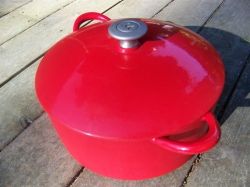
Why Dutch?
The Dutch led the way, more than three centuries ago, in developing processes for producing heavy cast iron cooking pots with heavy, tight lids, processes which were studied by and adopted by other nations -- so that is why we call these things Dutch ovens. Dutch ovens in the original style are still produced -- all cast iron, with a wire loop handle that goes over the top. Today these things are mainly used on cookouts. I don't think you would want to lug one of these heavy things up with you to the top of the mountain, but if you can drive there, that's another story.
Enameling came later, though it was a brilliant innovation and in fact is the thing that really makes these pots the centerpiece of stove-top, in-oven cooking.

Types, sizes, and cost
Round and oval. I seem to remember seeing a square one at one point. As mentioned, Julia favors oval ones, but round ones are convenient, too, for tomato sauces, stews, soups -- and they fit into the refrigerator a bit more easily.
There's a sort of standard size and then extra large ones, too. The small ones are a bit too precious for me: I've never found them useful.
In one sense they are not cheap, in fact are dear. But in another sense they are very, very cheap. The initial outlay for a well-made one can be substantial, but the thing will last forever, or nearly forever (the enameling sometimes chips off, some of it, though the pot can still be used), so on a per meal basis it is hard to find a better value -- particularly since it is the engine that pulls the whole meal.
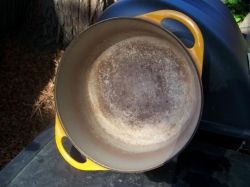
Discoloration occurs
But it has no effect on the cooking and the quality of the food.
Moreover, there are various methods for lightening or eliminating it, if the sight of this offends. Just search the net for alternative methods.
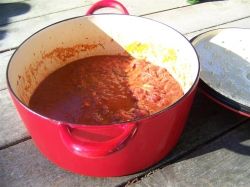
Other recipes
See "Spaghetti - Step-by-Step to Pasta Greatness - Pictured!"
Here's another recipe:
* Stewing beef in cubes
* extra virgin olive oil
* smashed garlic
* onions and carrots, and maybe some portobella mushrooms
* basil and thyme, maybe some rosemary, too
* a dried red chili pepper or two, along with coarse ground black pepper and sea salt
* small can of tomatoes, or maybe some chopped up Romas
* broth (1/2 beef, 1/2 vegetable) to cover
* a cup of red wine
Brown the beef in the olive oil, stir in the smashed garlic cloves. Add remaining ingredients. Simmer, covered, for 1 1/2 hours.
* Film tip
Although the real Julia can be found on video websites like youTube, Meryl Streep --- the immortal Meryl -- does a terrific job of recreating her in the film "Julie and Julia." The rest of the cast is first-class as well, including Amy Adams and Stanley Tucci.
The movie recreates Paris not long after WW2 and Washington, DC not long after that.
One of the things the movies do best: bring us back to interesting times.
Parting facts
Julia was born in 1912 in Pasadena, California, and lived to age 91. All that delicious food no doubt helped her live so long. She was six feet, two inches (1.88 m) tall, and was on the basketball team of Smith College, from which she graduated in 1934, and English major. When WW2 came, she joined the Office of Strategic Services, predecessor of the postwar CIA. The head of this new secret agency needed a database on who was where, which guys were the enemy spies, and related questions. There were of course no laptop computers in those days, so Julia used a typewriter to type up over 10,000 cards containing this information. I imagine she also became the resident expert on how to retrieve needed cards.
Eventually she was posted to Ceylon, where she met her future husband, Paul Child. Their office moved then to Kunming, capital of Yunnan Province in China, base for the Flying Tigers and its successor, the 14th Air Force. As the movie shows, her cooking career began well after this, when her husband's employer, the US State Department, transferred him to Paris, in charge of exhibits for the US Information Agency.
Part of a series
Pictures, pictures, pictures
Series within series, actually. Food & Cooking, for example, then -- within that -- series on vegetables, fruits, seafood, meat, etc. Books, too. Ideas, too. Travel, too. Key virtues:. pictures, clear step-by-step text. Delicious -- whether foods or ideas! All of the series, and all of the items in each series, can be found at this link: Lee White's Department Store

